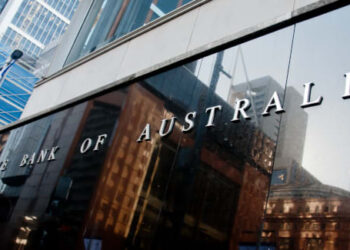Investors should consider underweighting particular sectors in the second half of 2024, according to VanEck’s latest analysis which revealed that mid- and small-caps weighed down Australian equities in 2Q24.
According to VanEck’s CEO, earnings season will be a confession for businesses on profit margins and how they have fared amid high interest rates and inflation.
“If the domestic economy comes under pressure, as the economy and cost-of-living crisis worsens, investors who are overexposed to Australian banks and cyclicals are going to feel the pressure,” Arian Neiron said.
He noted that a cause of concern is the unknown a possible recession poses for investors who are not used to sticky economic conditions.
“While they obsess over every wiggle in US data, investors seem remarkably calm about the Australian outlook,” said Neiron.
“Maybe 30 years since the last recession has meant everyone has forgotten what a recession looks like.”
Delving into Australia’s worrying economic predicament which would have a significant impact on domestic cyclicals and banks, Neiron noted that while Q1 GDP remained above zero “by the smallest margin possible”, it all but assured a negative print in Q2.
“That was because an across-the-board surge in inventories saved the bottom line. Ask yourself, do you believe wholesalers and retailers planned to boost inventories in the face of consumer weakness? Or were they caught off guard by how weak demand was?” Neiron asked.
“Inventories rose in the March quarter by about $2.2 billion, reversing a $2.2 billion drop in the December quarter, contributing 0.7 percentage points to GDP growth. This means that without inventory build-up, most likely, we think, due to wholesalers and retailers being caught off guard by weak demand, GDP would have fallen.”
He noted that, to prevent inventories from subtracting from growth in the June quarter, inventories will have to rise by over $6.6 billion.
“That is, outside of post-COVID restocking, a build not seen in 50 years,” he said.
Neiron also had a message for optimists who believe the labour market is holding up “remarkably well”, explaining that the gaps between GDP and hours worked/employment are actually continuing to widen.
“The gap between employment headcount and hours likewise continues to widen.
“This is the source of the ‘remarkable’ performance: in the wake of COVID labour shortages and the difficulty of hiring, businesses are hoarding labour, resulting in falling productivity, a rising gap between headcount and hours worked and rising labour costs.”
In other words, he said this is a bet on companies continuing to hoard labour in the face of falling demand and falling profits.
Moving on to fiscal policy, particularly the stage three tax cuts, Neiron opined that they may only offer a short-term boost to consumer spending, one that is “unlikely to be a panacea”.
“If we consider the tax cuts, at around 1.5 per cent of personal income, they’re dwarfed by the rise in mortgage payments – up around 5 per cent of personal income from the pre-COVID equilibrium, and 8 per cent from the COVID lows,” he said.
Australia, Neiron remarked, needs an inflation number that could force the Reserve Bank to consider lowering rates.
“This would fit the narrative of the federal budget. Failing that, it will be up to Reserve Bank governor Bullock to resist pushing the economy and labour market off the ‘narrow path’.
“Because it’s a long way down. Considering this, we think the upcoming reporting season, and the lead into it, could be characterised by warnings and misses.”
This, Neiron noted, has already been seen with luxury online retailer Cettire.
“If the domestic economy comes under pressure, as the economy and cost-of-living crisis worsens, Australian banks and domestic cyclicals could feel the pressure. An approach that underweights those sectors could be prudent into the second half of 2024.”







